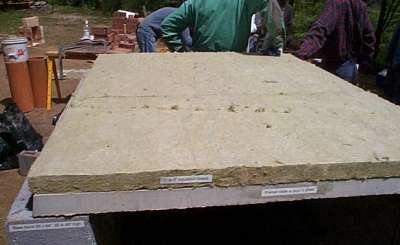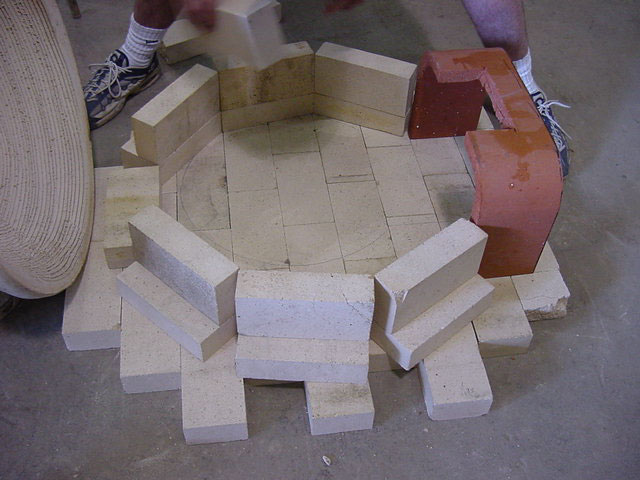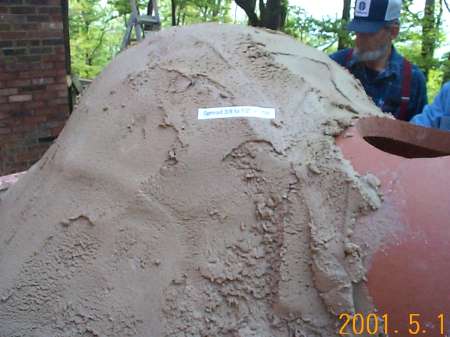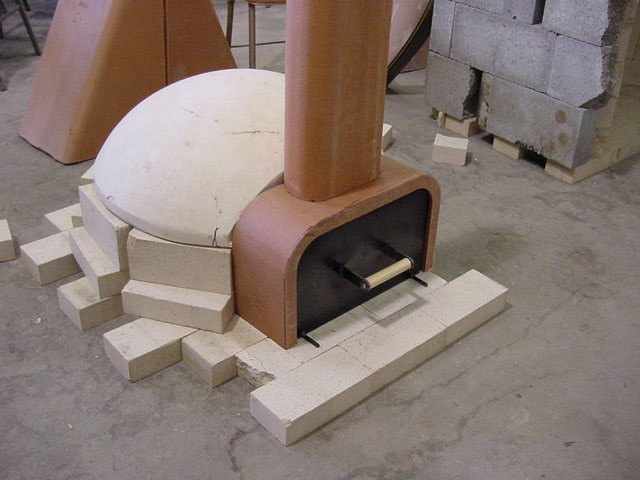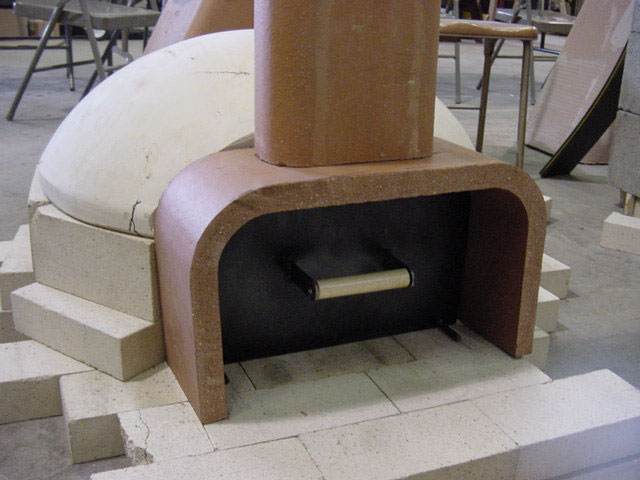(Tecleo aqui para las instrucciones en espanol)
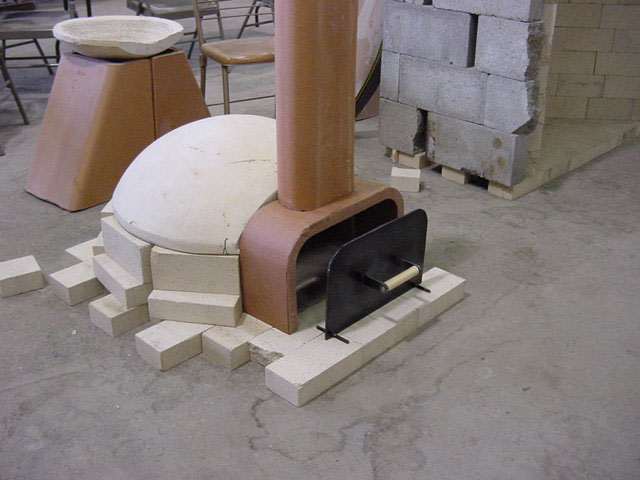 New entrance for 24" oven |
Components:
Dealers Masonry Bake Ovens |
Apolloni 24" Oven Under Construction
|
Cooking in a Black Oven (thermometer recommended) The Superior Clay Oven is a "black oven" meaning that it is heated by building a fire in the oven itself. Some foods, such as pizzas, cook fast in a hot oven - three minutes at about 700 degrees F - and are cooked in the oven while the fire is still burning. When ready to cook throw some corn meal on the oven floor and bake right on the hot firebrick. The oven door can be placed near the outside of the entrance to keep the oven hot and not so far in as to block the flue while the fire is still burning. French bread is traditionally baked in a periodic oven with a moist atmosphere and declining temperature. Get the oven up to about 400 degrees F. Rake out the fire and mop the hearth with a wet towel. Load the oven with enough bread to fill the oven to keep the moisture high. Push the oven door all the way in past the flue entrance to seal in the moist heat until the bread is baked. Meats and roasts can also be seared and roasted in a periodic oven with declining temperature after the fire has been raked out. The oven can be used as a smoker by keeping the temperature low, using the right wood and maybe a pan of liquid, depending on the recipe. And, of course, the oven is a great place to warm plates as it continues to cool. 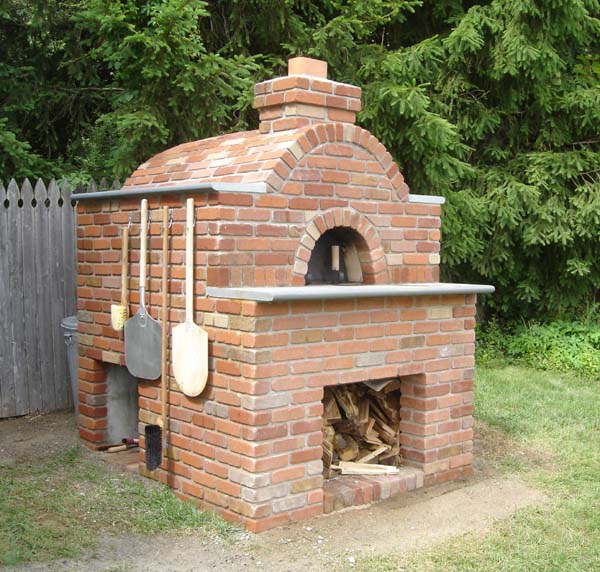
|
Building Fires At first, at least 24 hours after building the oven, build a small fire to break in the oven. Try to build up the temperature inside the oven at a rate of 50 degrees F per hour up to about 500 degrees F. The break-in fire will drive out any moisture, cure the refractory mortar and minimize the chance of damaging the oven. Many oven domes crack even when broken in properly. The purpose of the dome is to create the dome shape in the oven that cannot easily be achieved with other materials that would not crumble or scale off into the food or cost many times more. The cracks have no negative effect on the oven and a cracked dome will last a lifetime, be structurally sound and perfectly functional.
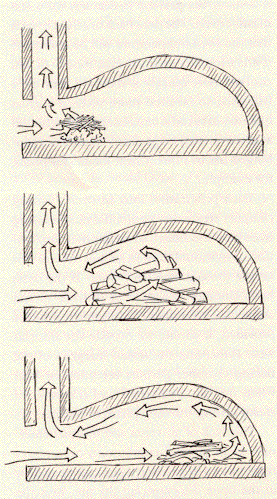 Graphic courtesy Alan Scott
To build a fire start with a small kindling fire in the front of the oven under the flue. Add wood when the fire is burning well, and gradually move the fire back into the oven. Use the oven door (when you are not adding wood) placed out near the front of the entrance tunnel to keep heat in the oven but not block the flue while the fire is burning. Enjoy! |
Building Fires and Cooking in Your Superior Clay Bake Oven
Superior Clay Bake Ovens
Buckley Rumford Fireplaces
Copyright 1995 - 2013 Jim Buckley
All rights reserved.
webmaster
